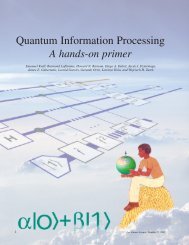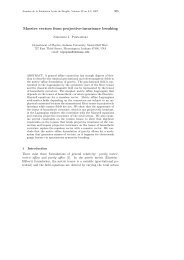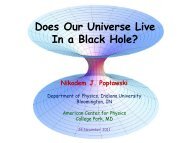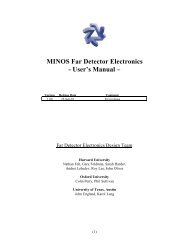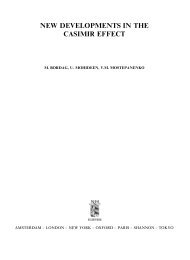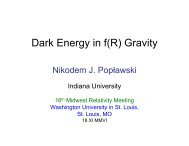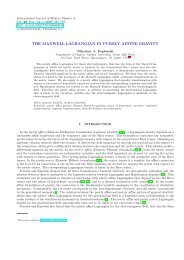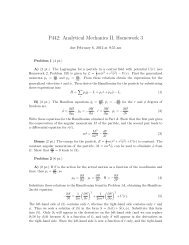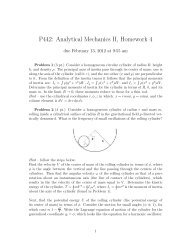Over Two-Hundred Education & Science Blogs * † - Department of ...
Over Two-Hundred Education & Science Blogs * † - Department of ...
Over Two-Hundred Education & Science Blogs * † - Department of ...
Create successful ePaper yourself
Turn your PDF publications into a flip-book with our unique Google optimized e-Paper software.
Appendix A. <strong>Two</strong> Social Networking Spheres<br />
1. Academic Discussion List* Sphere [ADLsphere - pronounced “addle-sphere”<br />
(no pun intended ;-)]<br />
a. Some Strengths <strong>of</strong> the ADLsphere<br />
(1) Dan MacIsaac (2000) [this APA style formatting means that the full reference can<br />
be found in the REFERENCES list below] in “Communities <strong>of</strong> on-line physics<br />
educators,” discusses the nature <strong>of</strong> academic discussion lists in physics (similar<br />
comments apply to similar lists for other disciplines):<br />
“It’s a physics educator’s dream—a readily available group <strong>of</strong> like-minded people with a<br />
variety <strong>of</strong> backgrounds and expertise who want to discuss physics and physics pedagogy<br />
with their peers. For the teacher who is feeling overscheduled, isolated, or lonely this<br />
‘c<strong>of</strong>fee klatch’ opportunity is a boost that lasts all day and on into the night. We’re talking<br />
about the virtual world <strong>of</strong> electronic mailing lists that are dedicated to the teaching and<br />
learning <strong>of</strong> physics. This electronic community is bound together through shared<br />
information and experience, an on-line culture that comprises high-school, college, and<br />
university instructors, researchers, hobbyists, students, retired teachers, and amateurs.”<br />
(2) Amitai and Oren Etzioni (1997) in “Communities: Virtual vs. Real” wrote<br />
(paraphrasing):<br />
“Virtual on-line communities complement and reinforce ‘real’ <strong>of</strong>f-line communities and<br />
have several advantages over the latter, e.g.:<br />
(a) easy communication over national borders and time zones;<br />
(b) inclusion <strong>of</strong> homebound (aged, ill, or handicapped) people;<br />
(c) accommodation <strong>of</strong> more individuals than <strong>of</strong>f-line meeting rooms;<br />
(d) strong memories;<br />
(e) high safety;<br />
(f) allowance for exploration <strong>of</strong> new relationships and identities – as documented by<br />
MIT's Sherry Turkle (1997), and<br />
(g) indifference to physical appearance and <strong>of</strong>f-line identity.”<br />
(3) Discussion lists running on the popular LISTSERV <br />
s<strong>of</strong>tware feature excellent archives and powerful search engines that allow searches by<br />
keywords, author, subject title, date, or any combination <strong>of</strong> those. I know <strong>of</strong> no such<br />
search engines in the Blogosphere.<br />
(4) In “<strong>Over</strong> Sixty Academic Discussion Lists. . .” [Hake (2007)], I wrote:<br />
“. . . . . Academic Discussion Lists provide an effective but seldom used mechanism for<br />
tunneling through interdisciplinary barriers, caused in part by the traditional departmental<br />
structure <strong>of</strong> universities. This underutilized potential for education research and<br />
development is represented schematically . . . .[on the next page]. . . ”<br />
Similar figures would apply to other types <strong>of</strong> R & D. The partially open window between<br />
Astronomy- and Physics-education research and development in the top figure appears to<br />
be a fortunate carryover from the traditional close links between those two disciplines in<br />
non-educational basic research.<br />
___________________________________________________<br />
* A subset <strong>of</strong> what Wikipedia calls “Electronic Mailing<br />
Lists.”<br />
31




